Top 5 Worst Food Preservatives in Processed Food
This post may contain affiliate links. As an Amazon Associate, I earn from qualifying purchases. Please read my disclosure.What are the worst ingredients in food today? Are there certain ingredients you should avoid at all costs? This guide details the top 5 worst food preservatives in processed food. All of these ingredients are red flags if you see them on the label, and should be avoided if you can!
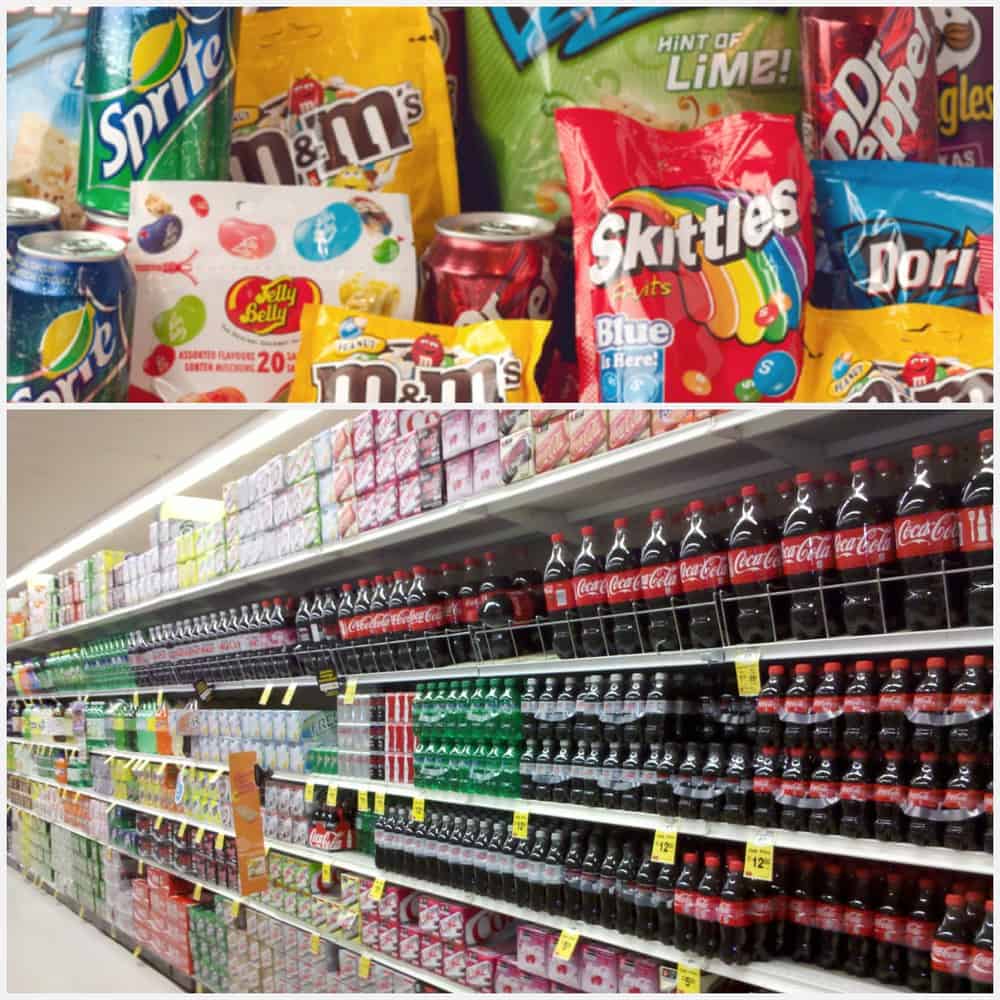
I recently got a question from a reader about what not to eat. She said, “Are there any foods that you’d say we should never eat, that are totally off limits?”
That got me thinking. In general, I don’t advocate cutting out entire food groups or foods altogether.
Instead, I like to promote the 80/20 rule or “everything in moderation.” I think you can pretty much find a healthier version of just about anything (e.g. 88% dark chocolate instead of milk chocolate, sprouted grain bread instead of white bread, whole wheat pasta or lentil flour pasta instead of white pasta, etc.)
I don’t believe in diets, and I don’t believe that entire food groups (e.g. gluten, dairy) are harmful unless you have an allergy or major intolerance to those foods.
But, after I received this question I realized while I don’t advocate for cutting out entire food groups, there are certain ingredients in processed/packaged foods that I try to avoid at all costs. These ingredients are largely food preservatives or stabilizers, meant to extend the shelf life of processed foods.
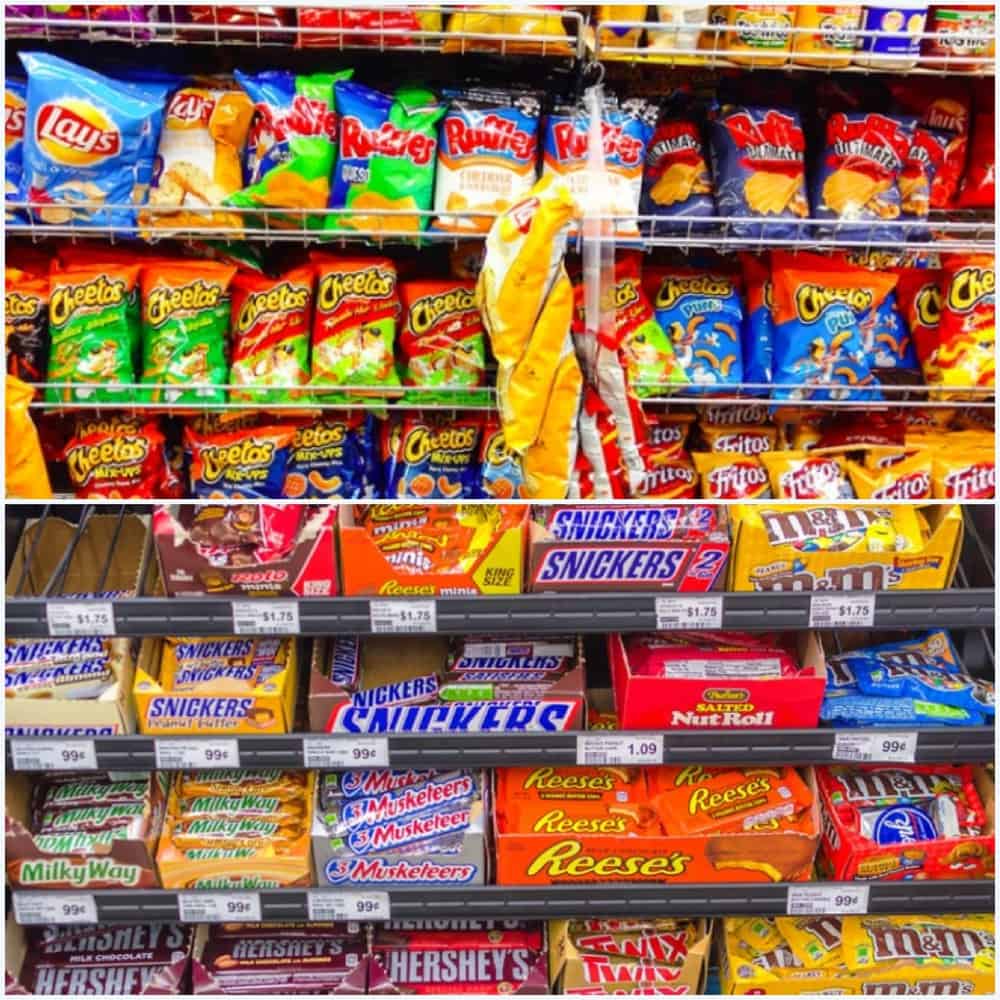
Are food preservatives bad?
Think of it this way: should bread be able to sit on the counter for a month without getting moldy? Probably not. Why is some bread able to do that? Because of food preservatives!
Processed ingredients and preservatives like trans fats, high-fructose corn syrup (HFCS), monosodium glutamate (MSG), artificial colors and flavors, nitrates/nitrites and BHT to name a few really just should not be in our food supply. Their only purpose is to either extend the shelf life of foods by preventing the growth of bacteria and mold, or by preventing certain fats from becoming rancid.
While preservatives added to food are approved by the FDA, that doesn’t mean that they’re always safe to eat on a regular basis. And if a food does contain preservatives, it is likely more processed and less nutritious than the real whole foods that you’d find around the perimeter of the grocery store.
So food preservatives are bad for two reasons: they introduce chemical-like substances into your daily food supply, and they are added to foods that are already too processed, refined or sugary to begin with, making an unhealthy food even more unhealthy for you.

Most of what we eat is not “real food.” It has become so processed, it is more of a food-like substance. Look at pretty much any processed food and you’ll find dozens of ingredients, many of which you probably won’t recognize. While I definitely don’t advocate cutting out all packaged foods altogether, there are some ingredients I absolutely avoid if I see them on the label.
What are some examples of food preservatives?
Here are the top 5 food preservatives to avoid in processed food
#1 | Sodium Nitrite and Sodium Nitrate
- What it is: These two chemicals are used to preserve meat and also give it a nice, vibrant color
- Why it’s bad: When added to meat (which has amino acids), which is then cooked, these nitrates convert to nitrosamines, which are associated with an increased risk of certain cancers. This conversion usually happens at high temperatures, and the presence of amino acids is necessary as well for the conversion to occur (which is why it’s problematic when nitrates are in meat). In a 2007 analysis, The World Cancer Research Fund revealed that eating 1.8 ounces of processed meat every day increases your cancer risk by 20%.
- It’s found in: Bacon, ham, salami, corned beef, hot dogs, pate, pickled pig’s feet, canned meat, smoked salmon, dried fish, jerky, lunch meat, cured meats and other processed meats.
#2 | BHA & BHT (Butylated hydroxyanisole (BHA) and butylated hydrozyttoluene (BHT))
- What it is: These are two preservatives used to extend shelf life and keep foods from becoming rancid.
- Why it’s bad: Both of these preservatives have been deemed potentially carcinogenic to humans and the State of California has listed them as a known carcinogen. They can also mess with your hormones.
- It’s found in: Cereals, packaging materials, sausage, hot dogs, gum, chips, beer, butter, vegetable oils, shortening, candy, jello, cosmetics.
#3 | Potassium Bromate (other names it goes by: bromic acid, potassium salt, bromated flour, “enriched flour”)
- What it is: This is a food preservative used to increase the volume in breads, rolls, flour
- Why it’s bad: It has been banned in the EU, Canada and several other countries because it has been shown to cause cancer in animals. It is also an endocrine disruptor.
- It’s found in: Most commercial breads (e.g. Wonder Bread, Home Pride). It’s also common in flour so check the ingredients before you buy!
#4 | High Fructose Corn Syrup (other names it goes by: glucose syrup, corn sugar, fruit fructose, iso-glucose).
- What it is: a highly refined sweetener made from corn starch that also acts as a preservative.
- Why it’s bad: It has been shown to contribute to weight gain, diabetes, cardiovascular disease, arthritis, insulin resistance, elevated triglycerides and LDL cholesterol.
- It’s found in: Soda, salad dressings, breads, cereals, yogurt, soups, canned vegetables, lunch meats, pizza sauce and condiments.
#5 | Trans Fat or Hydrogenated Vegetable Oil (other names it goes by: shortening, partially hydrogenated [soy, palm, corn, etc.] oil).
- What it is: Trans fats are created when a regular fat like corn, soybean, or palm oil is blasted with hydrogen and turned into a solid. Trans fats help packaged foods retain a longer shelf life (it doesn’t go bad for years!)
- Why it’s bad: Trans fats raise your LDL (bad) cholesterol and lower your HDL (good) cholesterol. They contribute to heart disease, obesity, strokes, and increase your risk of metabolic syndromes.
- It’s found in: Deep fried foods, margarine, chips, crackers, baked goods, fast food
What other ingredients should you avoid in processed food?
These 5 ingredients below are not food preservatives, but they are equally bad and should also be avoided.
#1 | Artificial Food Coloring / Food Dyes (other names it goes by: Blue 1 and 2 – E133, green 3, red 3, red 40 and yellow 6 – E110, yellow tartrazine – E102)
- What it is: These make foods look bright and colorful (much brighter than they would look in nature!)
- Why it’s bad: Artificial food coloring has been banned in Europe for a while now, as they have been linked to various cancers, chromosomal damage, and behavioral problems (ADD/hyperactivity) in kids
- It’s found in: Fruit juices, salad dressings, cocktail mixes, pie mixes, ice cream, candy, bakery products, American cheese, mac & cheese, soda, lemonade, kids’ medication, energy bars, cereal, fast food, frosting, puddings, jams, meat & fish (to make them appear “fresher”) and more!
#2 | Artificial Sweeteners (other names it goes by: Aspartame, Equal, Sucralose, Splenda, Saccharin, Sweet N Low, NutraSweet)
- What it is: A chemical that adds sweetness to food without adding calories to food
- Why it’s bad: Many artificial sweeteners are believed to be carcinogenic, and can contribute to headaches and digestive issues. It also messes with your metabolism and insulin because they trick the brain into forgetting that sweetness means extra calories, which can cause people to actually eat more sweet foods over time! Also, when you eat something that’s artificially sweetened, your body releases insulin the way it would if you actually ate sugar – which messes with your body’s insulin response over time.
- It’s found in: Over 6,000 products – including diet/sugar-free sodas and drinks, gum, yogurt, mints, instant breakfasts, dessert, low calorie drinks, toothpaste
#3 | MSG – Monosodium Glutamate (other names it goes by: Yeast Extract, Hydrolyzed Vegetable Protein, Hydrolyzed Plant Protein, Vegetable Protein Extract, Glutamate, Glutamic Acid, Sodium Caseinate, Textured Protein, Soy Protein Isolate, Barley Malt, Calcium Caseinate and Malt Extract)
- What it is: MSG is an amino acid used as a flavor-enhancer in processed foods. It is used to make foods more “addicting” to keep you eating/buying those foods!
- Why it’s bad: Regular consumption of MSG has been shown to stimulate the appetite and contribute to weight gain and obesity. It can also cause fatigue and headaches.
- It’s found in: Many processed foods like pre-made salad dressings, low-fat flavored yogurt, canned meats, frozen dinners, chips, canned soups, Chinese Food, cookies, seasonings, lunch meats.
#4 | rBGH and rBST (Recombinant Bovine Growth Hormone (rBGH), Recombinant bovine somatotropin (rBST))
- What it is: These are growth hormones designed to boost milk production in dairy cows.
- Why it’s bad: Milk from cows given these hormones have high levels of insulin-like growth factor (IGF-1). High levels of this have been linked to breast, colon and prostate cancers. Additionally, giving cows rBGH has been shown to increase the incidence of mastitis – which requires high levels of antibiotics to be given to the cows. rBGH milk is not required to be labeled.
- It’s found in: All dairy products that aren’t specifically labeled “No rGBH or rBST.”
#5 | Artificial Flavors
- What it is: Chemical compounds used to flavor foods and make them more addicting
- Why it’s bad: Artificial flavors on their own aren’t harmful, but they are often an indicator that the food is highly processed and likely includes one of the other ingredients on this list! Real food doesn’t require artificial flavoring to taste good it tastes great all on its own!
- It’s found in: Candy, soda, fast food, and other processed foods.
What are natural food preservatives?
Believe it or not, there are actually more natural ways to preserve food. They won’t preserve food as long as some of the chemicals listed above, but that’s probably a good thing!
Some of my favorite natural preservatives are: salt, alcohol and vinegar. Some of the easiest natural ways to preserve food include: freezing it, pickling it in vinegar, or fermenting it using alcohol!
Final Thoughts: What foods should you eat?
Stick to whole foods: the perimeter of the grocery store! Only buy packaged foods where: 1) you can pronounce all of the ingredients on the label (e.g. nut butter should just have nuts and salt listed, nothing else) and 2) none of the ingredients on this list are listed on the label!
I hope this list helps you navigate those confusing grocery store aisles, and help you find the healthiest food for you and your family!



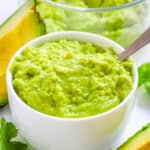

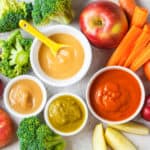


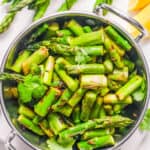






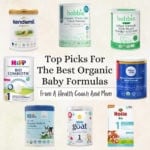



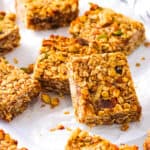



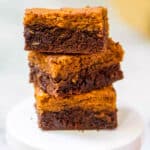
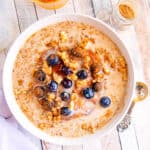

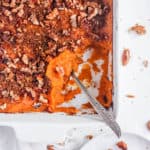





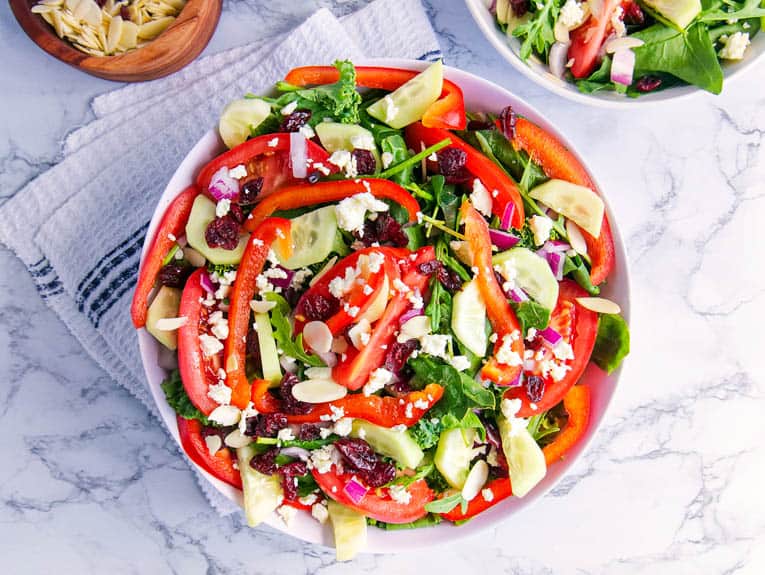


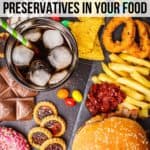
It’s disgusting that we have to deal with this crap in our food supplies, as well as the plastics w/ every little thing, for corporations’ ease & profits. Groups like this should join together to pressure lawmakers & government to ban these pollutants.
I agree Jody!! Hopefully over time we will get closer to how the EU regulates these types of preservatives in processed food!
Very useful for health conscious people.
It’s an insight to what could be long term effects of these preservatives if inadvertently are consumed with readymade & processed tinned food.
The gist is “stick to basic raw materials (whole grains/ cereals/ dry fruits)” available with Grocer & Green Grocer (Green & Leafy vegetables, beans)/ Fruits vendor (Local & seasonal fresh fruits), as far as possible, “Cook fresh & eat it hot”. (May not be possible all the while but could try and maximise this practice)….
Agreed! Glad you found this post helpful!
Thanks for taking the time to write this guideline. Thanks again for making it clear for the everyday shopper. I am curious though, when you say cereals, you mean the breakfast cereals such as corn flakes? Asking because I have been using oatmeal as breakfast for a while and even ground it up into flour to add it as a partial substitute for white flour to baking recipes. And as for additives and preservatives, Any food that uses so many should be considered snack, and eaten in very low portions.
Hi George! So glad you found this post helpful! And yes when I say cereals, I mean packaged breakfast cereals (like corn flakes). Oatmeal (if you’re buying whole rolled oats or steel cut oats) are a great option for a healthy breakfast and great as an “oat flour” too!
Thank you for the very useful info. I know it will greatly help me and others who are conscious of their health and their families. Thank you
No problem at all! So glad it’s helpful!
What about ascorbic acid?(vit c) and iodized salt? I kinda feel like all preservatives are bad
except for natural salts , vinegar ,and alcohol.
Hi Rocko! Yes, technically those forms of Vitamin C and Salt are more “processed” than the original source (e.g. Vitamin C from food, sea salt with no iodine). But there is no research or evidence to show that either of those modifications are remotely harmful. In fact, iodized salt can be necessary for people whose diets don’t include other natural sources of iodine and who don’t (or can’t) take a supplement. The 5 preservatives listed in this post are much much worse than ascorbic acid/iodized salt, and have shown to be actually harmful and shouldn’t be in our food supply. Hope that helps!
Great advice. In my experience, real food is not only better for you, it also tastes better. Once you get out of the habit of eating processed foods, your palate adjusts and you realize just how artificial and unsatisfying most of those things really are. They’re usually overly sweet or overly salty, and don’t have the depth of flavor that fresh ingredients come together to create!
I 100% agree!! Couldn’t have said it better myself 🙂 Thanks so much!
Wow! Those ten exist in everything that is processed and some products have several!
That’s exactly right!! These 10 ingredients are widespread in processed foods, which is why it’s so important to read ingredient labels to avoid them!
So interesting! Thanks for sharing your tips 🙂
No problem at all Becki! So glad you found this post helpful!
Nitrates and Nitrites while theoretically bad, haven’t actually shown to be bad in experiments on humans or animals. Therefore it is a scare, not a fact.
Hi Garry – Actually it has been proven in multiple studies that when nitrates and nitrites are added to meat (which has amino acids in it since meat is high in protein), which is then cooked, the nitrates/nitrites form Nitrosamines – which is a carcinogenic compound. Nitrates/nitrites need both amino acids and high heat cooking to form Nitrosamines – but since that always happens with meat – it is always problematic for them to be added to meat. Scroll down to the bottom of this article to read more about this topic.
Love this post! So true that when we stick to real, whole foods as the majority of our diet, we will be in the right place. I recently wrote about this as well, and found an article that found that 57% of what most people eat is ultra-processed foods! Love Dr. Hymans work, too.
Thanks Teresa – that’s exactly right! Sticking to real whole foods is the best strategy to avoid a lot of the marketing traps with processed food!
Do you really find that all the whole foods are around the perimeter of your store, and all of the bad foods are in the aisles? I’ve often seen this advice and wondered if it is more true of other supermarket chains than Giant Eagle, the major chain here in Pittsburgh. All of their stores are arranged differently. In my nearest store, here’s what’s around the perimeter: produce, bakery, prepared foods, fancy cheese and deli meats and salads, meat, bread, crackers, cookies, ice cream. You have to go into some of the aisles to get beans, frozen vegetables, nuts, oatmeal, or any dairy products. In other Giant Eagles, the one constant is that produce is near the entrance—but in their larger stores, that’s not the perimeter; along the side wall next to the produce section is the deli or bakery.
I’ve found this chart very helpful for finding whether a food additive is really dangerous or just mildly undesirable: https://cspinet.org/eating-healthy/chemical-cuisine
Hi Becca! That’s a good/interesting point – I suppose some stores probably do it differently! In general it is a good rule of thumb in that the processed food is more likely to be in the center of the store vs. in the perimeter, but probably doesn’t apply to every store out there! Thanks for sharing that chart too!
This is a great article. Thanks for also listing what each ingredient does and why it is used by manufacturers. Great info. I always say, knowledge is power.
Exactly!! It’s so hard to make the right healthy food choices if you don’t know exactly what the food manufacturers are doing with the ingredients they add to your food! I hope this helps shed some light on how to navigate those confusing marketing messages on foods at the grocery store!
Great post! I did not know that about enriched flour. Thanks so much for this info!
No problem at all! So glad it was helpful!! 🙂
Where can I get your recipes in Mexico?
Hi Mario! You can access all of my recipes on my blog right here! My blog is accessible in Mexico 🙂 Let me know if there are specific recipes you have questions about!
Excellent article. Consumers need to be more informed about harmful ingredients. It’s great that you not only outlined the ingredients but indicated why they are harmful to the body. I believe that armed with this knowledge, consumers will be more willing to avoid foods with these harmful substances.
I completely agree Rose!! It’s crazy some of the processed ingredients that are in our food. I’m so glad you found this post helpful!